![]()
![]()
![]()
Use LEFT and RIGHT arrow keys to navigate between flashcards;
Use UP and DOWN arrow keys to flip the card;
H to show hint;
A reads text to speech;
226 Cards in this Set
- Front
- Back
- 3rd side (hint)

|
Crile forceps/clamp |
Used for occluding bleeders before cauterization or ligation |
|
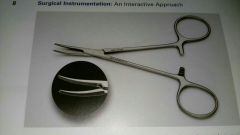
|
Halstead Forceps |
Used of occluding bleeders in small or superficial wounds before cauterization or ligation. |
|
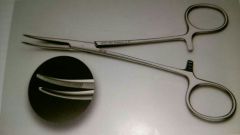
|
Kelly Forceps |
Used for occluding bleeders before cauterization or ligation. |
|
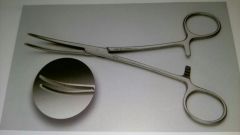
|
Rochester-Péan Forceps |
Used for occluding larger blood vessels and tissue before ligation, usually in a deeper wound or on heavier tissue |
|
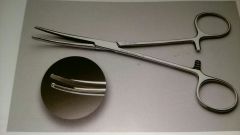
|
Carmalt Forceps |
Uses for occluding larger blood vessels and tissue before ligation, usually in a deeper wound or on heavier tissue. |
|
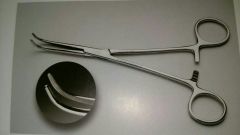
|
Mixter Forceps |
Is uses to clamp, dissect, and occlude tissue. |
|
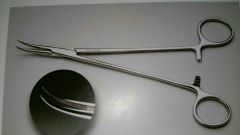
|
Adson Forceps |
Clamps small vessels in a deep wound or holds tonsil sponges. |
|
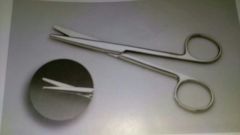
|
Straight Mayo Scissors |
Used for cutting suture. |
|
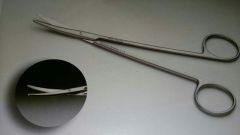
|
Curved Metzenbaum |
Dissect and undermine delicate tissues. |
|
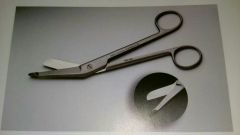
|
Lister Bandage Scissors |
Cut dressings, drapes, and other items; also used in cesarean sections to open the uterus without harm to the baby. |
|
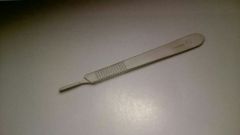
|
#3 Knife Handle |
Knife handles are used to hold various blades to create a scalpel. |
|
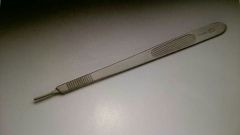
|
#3 Long Knife Handle |
Used for precision cutting deep within a wound |
|

|
#7 Knife Handle |
Used when precision cutting is needed in a confined space or a deep wound |
|
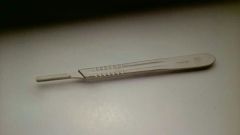
|
#4 Knife Handle |
Used with the #20 blade to create a larger and/or deeper incision in heavy tissue areas. |
|
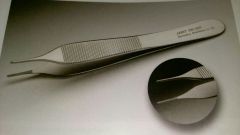
|
Plain Adson Tissue Forceps |
Used for grasping delicate tissue |
|
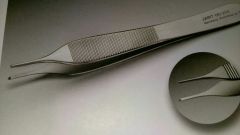
|
Toothed Adson Tissue Forceps |
Aligns the edges of the wound during stapling of the skin; grasps superficial tissues so Steri-Strips can be placed |
|
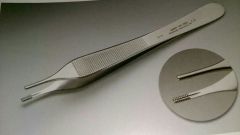
|
Brown-Adson Tissue Forceps |
Used for grasping superficial delicate tissue. Often used in plastic or hand surgery |
|
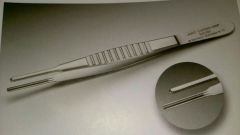
|
Debakey Tissue Forceps |
|
|
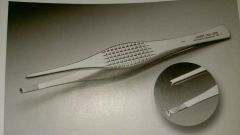
|
Ferris-Smith Tissue Forceps |
|
|
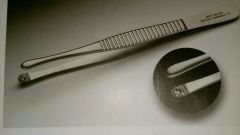
|
Russian Tissue Forceps |
|
|
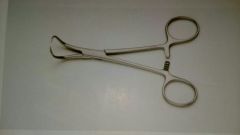
|
Towel Clip (Penetrating) |
|
|
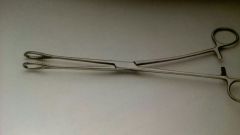
|
Forester Sponge Forceps |
|
|
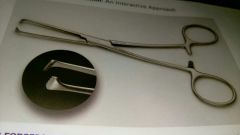
|
Allis Forceps |
|
|
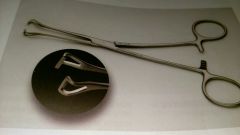
|
Babcock Forceps |
|
|
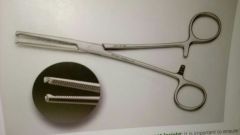
|
Kocher Forceps |
|
|
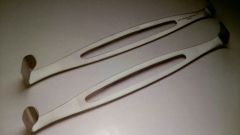
|
Army-Navy Retractor |
|
|

|
Senn Retractor |
|
|
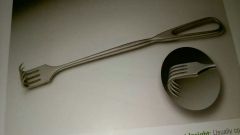
|
Volkman Retractor |
|
|
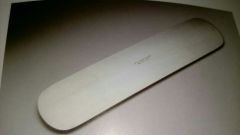
|
Ribbon Retractor |
|
|
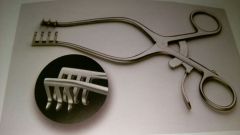
|
Weitlaner Retractor |
|
|
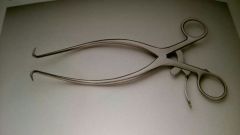
|
Gelpi Retractor |
|
|
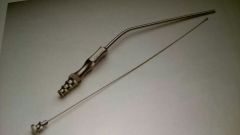
|
Frazier Suction Tip |
|
|
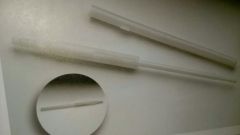
|
Poole Suction Tip |
|
|
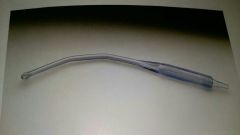
|
Yankauer Suction Tip |
|
|
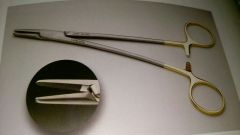
|
Mayo-Hegar Needle Holder |
|
|
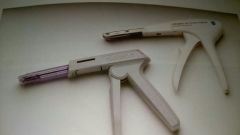
|
Skin Stapler |
|
|
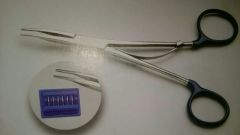
|
Hemoclip Applier |
|
|
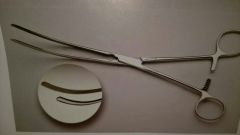
|
Doyen Intestinal Clamp |
|
|
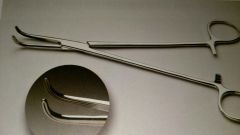
|
Lahey Gall Duct Forceps |
|
|
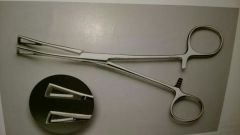
|
Pennington Forceps |
|
|
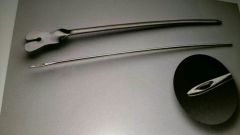
|
Probe and Grooved Director |
|
|
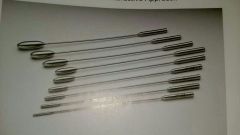
|
Bakes Common Duct Dilators |
|
|

|
Richardson-Eastman Double Ended Retractor |
|
|
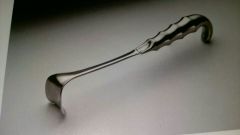
|
Richardson Retractor |
|
|
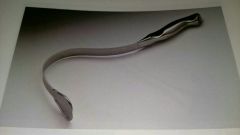
|
Harrington "Sweetheart" Retractor |
|
|
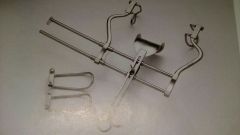
|
Balfour Retractor |
|
|
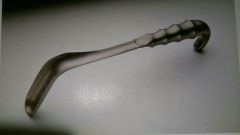
|
Sawyer Rectal Retractor |
|
|
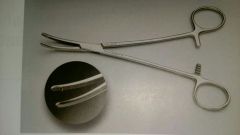
|
Heaney Hysterectomy Forceps |
|
|
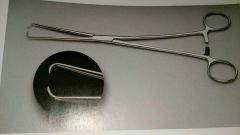
|
Schroeder Tenaculum |
|
|
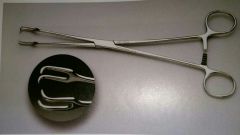
|
Schroeder Uterine Vulsellum |
|
|
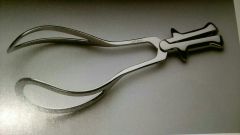
|
Simpson Obstetrical Forceps |
|
|
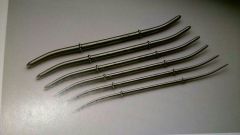
|
Hank Dilators |
|
|

|
Sims Uterine Sound |
|
|
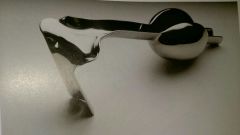
😭😭 |
Auvard Weighted Vaginal Speculum |
|
|
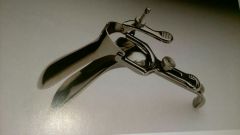
|
Graves Vaginal Speculum |
|
|
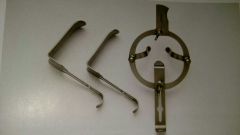
|
O'Sullivan-O'Connor Retractor |
|
|
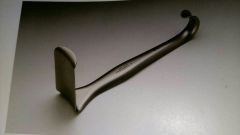
|
Eastman Retractor |
|
|
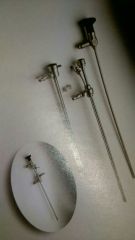
|
Hysteroscope |
|
|

|
Jeweler's Bipolar Forceps |
|
|
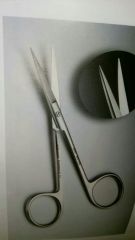
|
Knapp Iris Scissors |
|
|
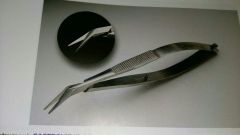
|
Castroviejo Corneal Scissors |
|
|
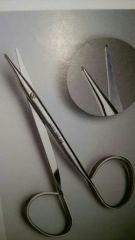
|
Stevens Tenotomy Scissors |
|
|
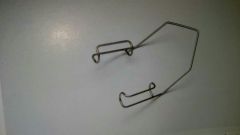
|
Barraquer Eye Speculum |
|
|

|
Cottle Mallet |
|
|
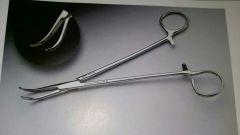
|
Adson Tonsil/Schnidt Forceps |
|
|
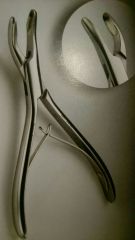
|
Dean "Single-Action" Rongeur |
|
|

|
Becker Septum Scissors |
|
|
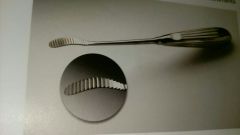
|
Aufricht Nasal Rasps |
|
|
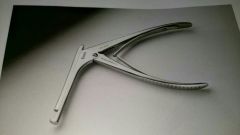
|
Kerrison Rongeur |
|
|
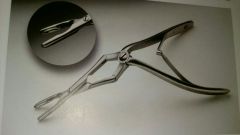
|
Jansen-Middleton Septum Forceps |
|
|
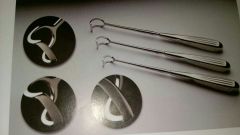
|
Barnhill Adenoid Curettes |
|
|

|
Jansen Mastoid Retractor |
|
|
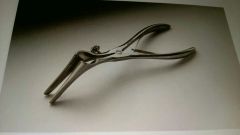
|
Cottle Nasal Speculum |
|
|

|
Cottle Knife Guide and Retractor |
|
|
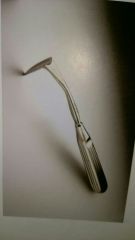
|
Aufricht Nasal Retractor |
|
|

|
Jennings Mouth Gag |
|
|
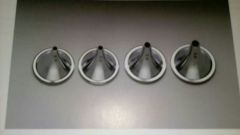
|
Boucheron Ear Speculum |
|
|
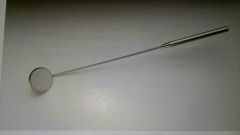
|
Mouth Mirror |
|
|
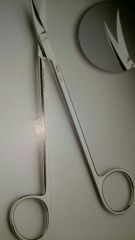
|
Kelly Scissors |
|
|

|
Upper Anterior Extraction Forceps |
|
|
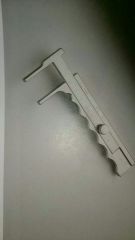
|
Townley Caliper |
|
|

|
Chuck and Key |
|
|
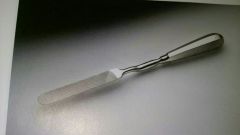
|
Bone file |
|
|
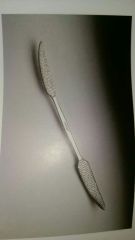
|
Putti Bone Rasp |
|
|

|
Liston Bone Cutting Forceps |
|
|

|
Stille Bone Gouge |
|
|
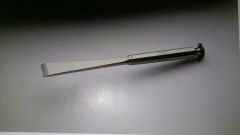
|
Stille Bone Chisel |
|
|
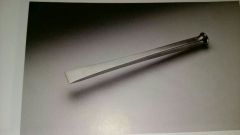
|
Stille Bone Osteotome |
|
|
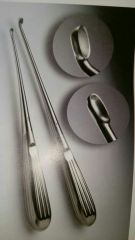
|
Bruns Oval Bone Curettes |
|
|
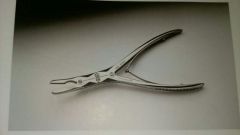
|
Zaufel-Jansen "Double-Action" Rongeur |
|
|

|
Cushing Rongeur |
|
|
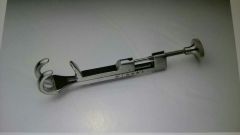
|
Lowman Bone Clamp |
|
|
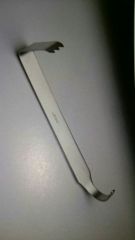
|
Hibbs Retractor |
|
|
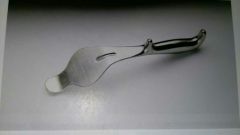
|
Bennett Retractor |
|
|

|
Beckman Retractor |
|
|
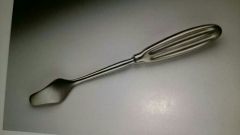
|
Chandler Retractor |
|
|

|
Taylor Hip Retractor |
|
|
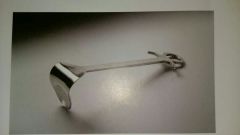
|
Browne Deltoid Retractor |
|
|

|
Webster Needle Holder |
|
|
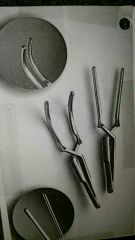
|
DeBakey Bulldog |
|
|
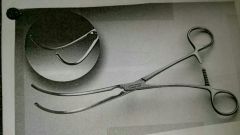
|
DeBakey Aortic Clamp |
|
|

|
Surgiclip Applier |
|
|
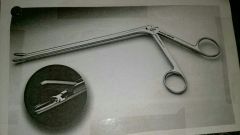
|
Spurling Rongeur |
|
|
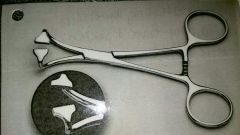
|
Non penetrating towel clip |
|
|
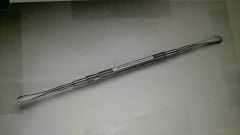
|
Freer Elevator |
|
|
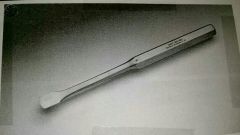
|
Key Elevator |
|
|
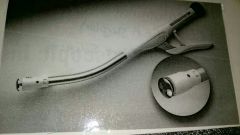
|
Intraluminal Stapler |
End to end, end to side, side to side |
|
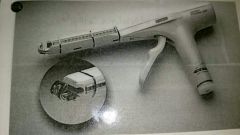
|
Ligating and Dividing Stapler |
LDS |
|
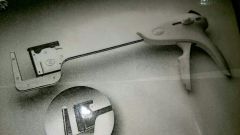
|
Linear Stapler |
TA |
|
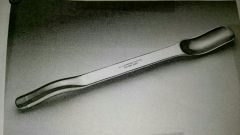
|
Murphy-Lane Bone Skid |
|
|
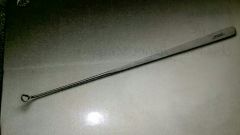
|
Heaney Uterine Biopsy Curette |
|
|
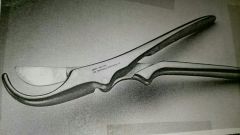
|
Gluck Rid Shear |
|
|
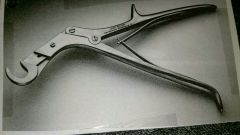
|
Stille-Giertz Rib Shear |
|
|
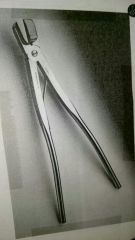
|
Bethune Rib Shear |
|
|

|
Mayo Uterine Scissors |
|
|

|
Curved Mayo Scissors |
|
|
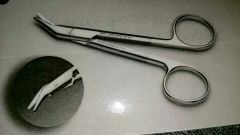
|
Wire Scissors |
|
|
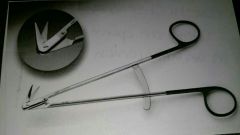
|
Diethrich Scissors |
|
|
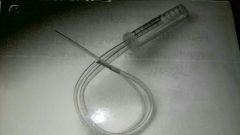
|
DeLee Suction |
|
|
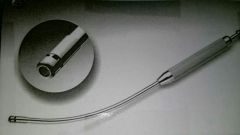
|
Vascular Suction Tip |
|
|
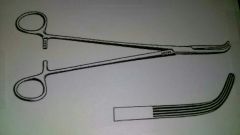
|
Gall Duct Forceps |
|
|
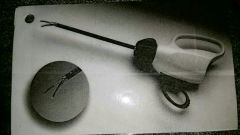
|
Harmonic Scalpel |
|
|
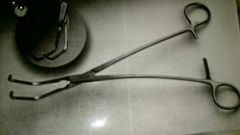
|
Satinsky Vena Cava Clamp |
|
|
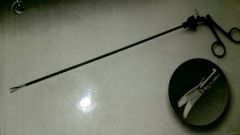
|
Endoscopic Scissors |
|
|
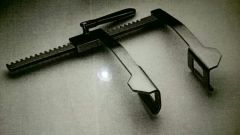
|
Finochietto Rib Retractor |
|
|
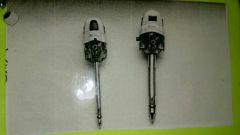
|
Trocars |
|
|
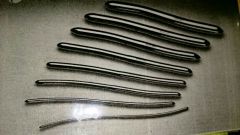
|
Hegar Dilators |
|
|
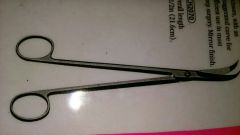
|
Jorgenson Scissors |
|
|
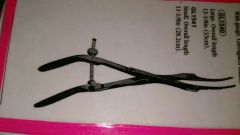
|
Goodell Uterine Dilators |
|
|
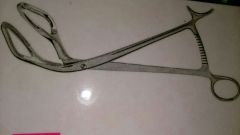
|
Somers Uterine Elevating Forceps |
|
|
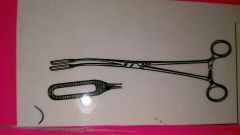
|
Javerts Placenta Forceps |
|
|
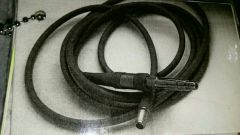
|
Fiberoptic Light Cord |
|
|
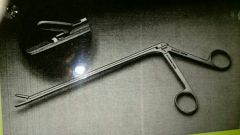
|
Pituitary Rongeur |
|
|
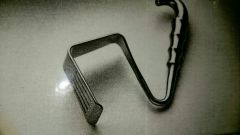
|
Davidson Scapula Retractor |
|
|
|
|
|
|
|
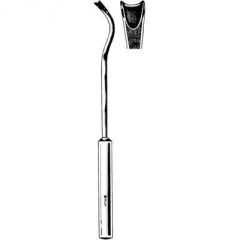
|
Downing Cartilage Knife
|
|
|
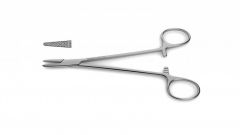
|
Crile-Wood Needle Holder
|
|
|

|
Book Walter
|
|
|
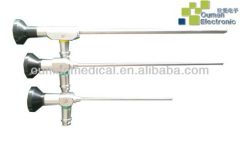
|
Endoscope
|
|
|
|
Stainless steel
|
An alloy of steel with chromium and sometimes another element, that is highly resistant to rusting and ordinary corrosion |
|
|
|
Scissors
|
Surgical instruments used to cut, incise and/or dissect tissue |
|
|
|
Osteotomes
|
Chisel-like instruments used to cut or shave none |
|
|
|
Chisels |
Wedge-shaped instrument used to cut or shave bone |
|
|
|
Rongeurs |
Surgical instruments used to cut or bite away at bone and tissue |
|
|
|
Forceps
|
Instruments used for grasping, holding firmly or exerting traction upon objects |
|
|
|
Hemostatic Forceps |
Surgical instruments used to control the flow of blood
|
|
|
|
Needle Holders
|
Surgical instruments designed to drive suture needles to close or rejoin a wound or surgical site
|
Also known as needle drivers
|
|
|
Martensitic
|
this metal is also known as 400 series stainless steel. It is magnetic and may be heated-hardened |
|
|
|
Retractors |
Surgical instruments primarily used to move tissue and organs to keep the surgical site exposed throughout surgery
|
|
|
|
Cannulas
|
Surgical instruments with a hollow barrel (or lumen) through their center. Cannulas are often inserted for drainage
|
|
|
|
Rib spreader
|
a retractor used to expose the chest |
|
|
|
Suction devices |
Surgical instruments used to extract blood and other fluids from a surgical site
|
|
|
|
Austenitic
|
this metal is also known as 300 series stainless steel. It is non-magnetic and cannot be heated-hardened and is more corrosion-resistant than Martensitic stainless steal
|
|
|
|
Serrations
|
Parallel grooves in the jaws of surgical instruments |
|
|
|
Ratchet |
the part of the surgical instrument that "locks" the handles in place |
|
|
|
Box Locks
|
Point where the two jaws or blades of an instrument connect and pivot |
|
|
|
Passivation |
a chemical process applied during the instrument manufacturing process that provides a corrosion-resistant finish by forming a thin, transparent oxide film |
|
|
|
400 Series stainless steel is
|
hard and used when sharp cutting edges are needed
|
|
|
|
300 Series stainless steel is
|
workable and malleable
|
|
|
|
A typical manufacturing cycle- from forging to finished instruments- usually
|
takes up to 6 weeks |
|
|
|
The Crile-Wood needle holders are ... |
narrower than the Mayo-Hegar design |
|
|
|
Jaws made of tungsten carbide are typically preferred
|
|
|
|
|
The primary function of tissue forceps is to
|
manipulate tissue |
|
|
|
A design feature of this tweezer-styled forceps is the
|
multiple-teeth configuration at the distal tips |
|
|
|
The teeth assist in
|
grasping tissue and provide a more secure grip |
|
|
|
Dressing forceps are similar to tissue forceps except
|
they have serrations instead of teeth at the distal end |
|
|
|
The primary function of dressing forceps is
|
to manipulate tissue and pack surgical sites |
|
|
|
The primary function of a retractor is to
|
move tissue aside for exposure and visualization of the surgical site |
|
|
|
Retractors can be
|
handheld, self retaining or table mounted
|
|
|
|
Small finger-held retractors
|
move and hold skin and subcutaneous tissue
|
|
|
|
Larger retractors are used |
to retract muscle tissue and organ |
|
|
|
Some common self retaining retractors are
|
Weitlaner, Gelpi, and Beckman-Adson |
|
|
|
The primary function of scissors is to
|
cut tissue, suture and other material in the surgical field |
|
|
|
Dissection
|
the process of cutting apart or separating tissue |
|
|
|
Mayo scissors are one of the most |
popular scissors used and are identified by beveled blades
|
|
|
|
For dissection
|
curved scissors are primarily used because their curve allows for better visualization |
|
|
|
Tungsten carbide blades
|
These scissors have gold rings on the handle and tungsten carbide blade edges |
|
|
|
Scissors with tungsten carbide blades have a
|
harder and stronger cutting edge, and they allow the scissors to remain sharper for a longer time than other scissors |
|
|
|
Serrated blades
|
the design feature of a serrated blade is the prevention of tissue slippage or escape during cutting |
|
|
|
Microgrind or supercut blades |
Black rings visualy identified these scissors from standard or gold handled tungsten carbide scissors |
|
|
|
The design of a black handled scissors is to
|
simulate a tissue lancing/slicing action |
|
|
|
While all other scissors cut tissue with a crushing action a black handled scissor
|
has on blade sharpened like a knife to slice tissue; the other blade causes a guillotine effect with its standard blade |
|
|
|
The primary function of a suction devices is to
|
extract (suction) blood and fluids from the surgical site |
|
|
|
One of the most common suction devices are the
|
Frazier suction tube
|
|
|
|
The Frazier suction device include a metal stylet
|
that is used during the surgical procedure to unclog the suction channel |
|
|
|
The stylet is not to be used to
|
clean the device |
|
|
|
The primary function of single/double action rongeur is to
|
cut or bite away at bone and tissue |
|
|
|
The difference between a single action and double action rongeur is |
the design of how the jaws close
|
|
|
|
The double action rongeurs movement reduces the
|
amount of hand strength, so the instrument bites more with less hand strength |
|
|
|
The main inspection point on single/double action rongeurs is the |
jaws |
|
|
|
The primary function of Kerrison/Laminectomy rongeurs is to
|
remove the disc or lamina during spine surgery |
|
|
|
The distal portion of Kerrison/Laminectomy rongeurs must be inspected after each use
|
to look for bioburden and cutting edge damage |
|
|
|
The primary function of nail nippers is to |
cut toenails and fingernails and occasionally to trim small bone fragments |
|
|
|
The primary use for Graves and Pederson vaginal speculums is to
|
expose the vaginal cavity |
|
|
|
Within minutes, blood can
|
begin to dry on surgical instruments
|
|
|
|
To prevent damage associated with dried blood |
separate the rings and ratchets for box-lock exposure on applicable instruments and cover them with a water-moistened towel |
|
|
|
The use of saline as a soaking or rinsing agent accelerates the... |
rusting and pitting of surgical instruments |
|
|
|
For clinical reasons OR personnel cannot eliminate the exposure of stainless steel instruments to saline... |
however, after the surgical procedures are completed, saline must be removed as an early step in the cleaning process |
|
|
|
"rust" that appears on an instrument is |
often a stain |
|
|
|
a pencil eraser can be used for an "eraser test" to help determine |
the difference between staining and rusting |
|
|
|
Instrument: Scissors 4.5" and larger |
Test material: Red test material (latex); Orange material (latex free) Test: scissors must be able to cut through to the tip two or three times |
|
|
|
Instrument: Scissors 4" or smaller. |
Test material: Yellow test material (latex or latex free)
Test: scissors must be able to cut through the tips two to three times |
|
|
|
Instrument: Bone cutter |
Test material: index card Test: cut off a piece of the index card |
|
|
|
Instrument: kerrison rongeur |
Test material: Index card Test: Punch a clean hole through the card |
|
|
|
Instrument: Laminectomy rongeur |
Test material: index card Test: the rongeur should make a clean bite using half the jaw |
|
|
|
Instrument: double-action Rongeur |
Test material: index card Test: the rongeur should make a clean bite through the card |
|
|
|
Instrument: Bone curette A |
Test material: Plastic dowel rod Test: shave off pieces of the dowel rod. A |
|
|
|
Instrument: Chisels and Osteotomes B |
Test material: plastic dowel rod Test: shave off pieces of the dowel rod B |
|
|
|
The use of tape is |
one popular method for identifying instruments |
|
|
|
When applying tape to identify a instrument |
wrap the tape one and one-half times around the device |
|
|
|
Acid base etching uses a |
stencil, solutions and electricity to mark stainless steel |
|
|
|
Heat-fused nylon |
This color coding is often referred to as "dipping" and is typically done in a repair facility |
|
|
|
Heat-fused Nylon is a |
powder-coating process that leaves a thin layer of colored nylon on the instrument |
|
|
|
Laser etching |
This durable process is usually done by the manufacture or an outside vendor |
|
|
|
The dot marking system |
where a small barcode containing the instrument information is applied with pressure-sensitive tape. |
|
|
|
Many surgical instruments must be lubricated... |
after each use or in accordance with manufacture's recommendations. |
|
|
|
The use of neutral-pH lubricant extends |
the life of the instruments, and makes the device easier for the surgeon to use |
|
|
|
While most washer-disinfectors will lubricate instruments |
some instruments may need to be lubricated again during assembly |
|
|
|
Always follow the manufacture's instructions for... |
cleaning, lubrication and sterilization |
|
|
|
place heavy instruments |
on the bottom or side of tray. this will help protect the smaller, more delicate instruments |
|
|
|
Select an instrument tray that allows adequate |
space for weight distribution. overcrowding instruments can cause damage |
|
|
|
All curved instruments should be |
curved in the same direction to protect tips from being damage |
|
|
|
tissue and dressing forceps should be |
softly nested together or placed close to each other in the tray or peel pack |
|
|
|
Delicate instruments should be kept in approved |
micro cases or small protective cases within the surgical tray |
|
|
|
The use of metal instrument holders, called stringers |
can assist in faster sterile field assembly and safer handling of the instruments, especially sharps |
|
|
|
Laser-finished instruments should never have |
metal-to-metal contact that can damage, chip and scratch the finish during decontamination, tray assembly and transport |
|

